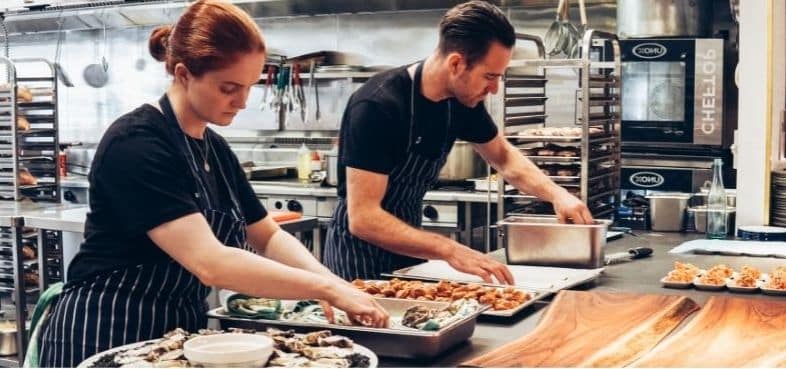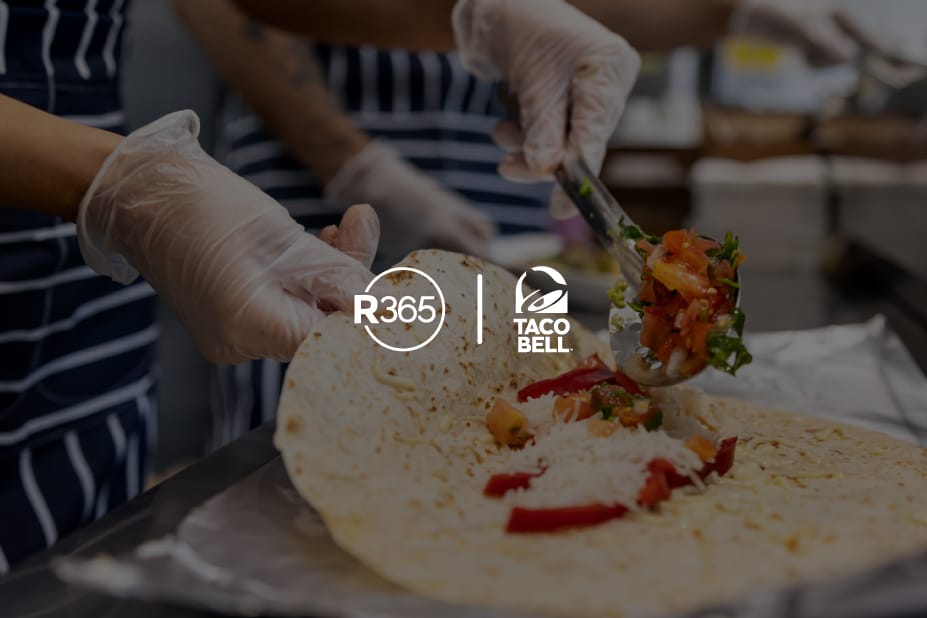From placing the next inventory order to scheduling staff, there are many decisions to be made every single day in a restaurant. With so many different factors, successful restaurant owners and operators know that restaurant sales forecasting is key to profitability.
Restaurant sales forecasting leverages historical revenue data, information about current conditions, and knowledge of external events to help project future sales levels. With this information, you can keep your operations running smoothly while optimizing your costs like restaurant labor and inventory.
Forecasting is especially important in times of uncertainty or new market conditions. The COVID-19 pandemic forced many restaurants to abruptly change business models. With restaurant restrictions and shifting customer behaviors, restaurants in 2020 and much of 2021 faced fluctuating sales and revenue levels.
As you look to the rest of 2021 and beyond, you may still be adjusting your forecasting. Forecasting in this time period can be especially tricky but having the right restaurant data in hand can help you rise to the challenge. So, what numbers should you use for forecasting, in 2021?
Why you need to conduct restaurant sales forecasting
When you don’t know if it’s going to be a busy or slow weekday night, it can be difficult to decide how many staff members to schedule and inventory to stock. Restaurant sales forecasting is a tool that can help you understand what your sales are projected to look like, informing all your other decisions.
Forecasting for restaurants predicts future sales levels, drawing from historical restaurant analytics and details about your current revenue. Proper forecasting can help you optimize all your variable costs, like inventory, staff, and prep, around those projected sales levels.
Forecasting can help prevent understaffing that results in negative customer experiences, as well as overstaffing that wastes labor hours. It can also help you order inventory and prep at appropriate levels, ensuring you are not contributing to food waste or running out of key items from your menu.
Beyond the day-to-day choices you make for scheduling and inventory, sales forecasts can also help with “big picture” decisions. Forecasts can aid proactive promotions or events to boost sales during a slow season. Forecasting can even help you make critical decisions like when might be the best time to invest in a renovation or an expansion to a new location.
Calculate your restaurant’s daily capacity
To create a baseline for your restaurant sales forecast, consider starting with your restaurant’s “daily capacity.” Your daily capacity can be calculated with a formula such as:
Table Count x Average Number of Seats per Table x Average Guest Spend = Daily Capacity
This summarizes the sales you can make on an average day at your normal capacity.
In addition, consider adjusting the above formula for a slow evening when you are at partial capacity. This allows you to establish the highs and lows of your sales forecast baseline.
Use historical sales data to predict future sales and drive forecasting
While your restaurant’s daily capacity information is helpful to understand, the most powerful tool you can use to project revenue is your historical sales data. Your point of sale (POS) system contains an enormous amount of valuable restaurant data that you can use in your operations.
Ultimately, forecasting with POS data depends on having access to accurate data and being able to act on it. If your restaurant management system is fully integrated with your POS system, you can automate tracking your sales and labor data for your restaurant sales forecasting.
Usually, to best understand your current sales trends, compare your current year sales trends to the sales trends of the past year. Say you want to use forecasting for the first Monday in September. Taking the average trailing Mondays of this year, versus the average of trailing Mondays at the same time last year, can give you comparable data sets.
By understanding how your sales were in a previous, similar time frame, you can work to keep your sales levels on track. If there are new trends or changes, you can recognize them quickly and make any decisions you need.
For these numbers, it is helpful to mark and exclude days that were abnormal spikes or pits in sales levels, so that they are excluded from trailing averages (note: see next section about year 2020).
In 2021, use 2019 rather than 2020 for prior year comparisons
Prior year comparisons come with one important caveat. For restaurant owners and operators in 2020, most of the year consisted of abnormal sales levels. Since most days were exceptions, you wouldn’t normally include in your sales averages, consider replacing a comparison to 2020 with a comparison to 2019 (or just use the current year trailing averages).
However, many restaurant sales forecasting solutions automatically draw from the prior year for forecasting, without giving you the option to specifically choose the year. While this may have been an adequate solution in the past, the outlier sales numbers from 2020 have changed the formula.
If you are going to do sales forecasting in 2021, and you want to compare to 2019 rather than just the prior year of 2020, make sure that your restaurant management system enables you to choose which year to use for comparisons. Easily toggling between 2020 or 2019 numbers can help you ensure you are basing your forecasting numbers on data that is relevant and comparable.
Forecast by Revenue Center
If your restaurant group added or increased off-premises dining, like takeout and delivery, during the COVID-19 pandemic, you may still be relying on those modes for revenue in 2021. If this is the case, breaking down your restaurant sales forecasting by revenue center can give you a more granular picture of your sales.
If you’d like to forecast by revenue center, use your POS system to separate your sales by channel. As your business continues to adapt to new market conditions in 2021 and beyond, having access to forecasting by revenue center can help you spot and then respond proactively to new trends.
Forecast your restaurant labor cost
Your sales revenue forecasting can have the largest impact in two areas of your restaurant operations: labor and inventory. Since both are variable expenses that make up your prime cost, applying restaurant sales forecasting to these areas is particularly beneficial.
First, sales forecasting can help you make better staffing decisions, both for your employees and your customers.
Since your restaurant labor is limited, understanding your projected sales allows you to schedule the right staff when needed most. Strategic scheduling that closely follows projected sales levels can help avoid poor customer service and prevent employee burnout.
In addition, creating schedules based on restaurant data rather than “manager’s gut” can help create more stability and confidence in scheduling. By ensuring your staff is getting enough hours (and not being cut during slow shifts), you can help increase retention.
An optimized labor cost helps improve your bottom line, protect customer satisfaction, and contribute to overall employee retention.
Forecast your restaurant inventory needs
Second, by comparing real-time inventory and purchasing data, along with projected sales, managers can make smart ordering decisions that match inventory needs. Restaurant forecasting can help prevent food waste and help maintain appropriate inventory levels.
A streamlined inventory, based on projected sales levels, can prevent food waste that results from over-ordering. As the saying goes, if you don’t have the excess product on your shelf, you can’t waste it.
In addition, forecasting for orders can also prevent under-ordering that forces you to eighty-six items on a busy night. Sales forecasting is especially critical for keeping key items, like your best sellers, in stock.
While you can’t always exactly predict your revenue, your restaurant sales forecast can give your managers a data-driven starting point for their next order. And the more often you review and compare sales forecasting, the more accurate your forecasts will become over time.
Consider external factors into your restaurant sales forecasting
Finally, although historical sales data can help you accurately predict much of future sales, there are still some external factors you should consider.
For example, certain weather events may impact your sales. Good weather tends to increase dine-in business, while bad weather may increase your takeout sales. Whatever trends hold true for your restaurant, weather events can have an influence on projected sales numbers.
Other external events like sports games, business conferences, or festivals may impact sales levels. As you examine your sales forecasts, make sure to look outside your restaurant to ensure you account for notable local events.
Conclusion
Restaurant sales forecasting is key for restaurants to master because it can impact almost every single major area of operations. Whether you want to know how much inventory to order for next week, or who to schedule next month, a restaurant sales forecast can help provide you with a helpful map to navigate murky waters and put your restaurant on the path toward success. Because of abnormal sales levels through most of 2020 and nearly half of 2021, it’s important to consider using comparisons to 2019 or using the current year trailing averages.
If you would like to easily track restaurant analytics and gain insight into your operations to increase efficiency and boost profits, consider a comprehensive, restaurant-specific management solution. Restaurant365 incorporates restaurant accounting software and restaurant operations software into an all-in-one, cloud-based platform. It includes tools for financial reporting, operational reporting, inventory control, scheduling, and more.



